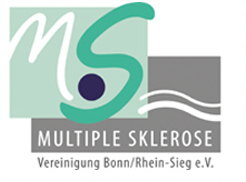Collaborative Creativity: Artists and AI in the NFT Space
The digital art world has been revolutionized by the rise of Non-Fungible Tokens (NFTs) and artificial intelligence (AI). These technologies have allowed artists to create unique, limited-edition works that can be sold on online marketplaces such as OpenSea, Rarible, and SuperRare. What sets these NFTs apart, however, is their collaborative nature, where multiple artists come together to create a single work of art. In this article, we explore the concept of collaborative creativity in the NFT space and the role of AI in facilitating it.
What are collaborative art projects?
Collaborative projects involve multiple artists working together on a single work of art. These projects can be large or small, from conceptual pieces to full-scale artworks. The collaborative process often has several stages:
- Consideration: Artists come together to discuss their ideas and define the scope of the project.
- Research and Development: They conduct research, collect reference materials, and explore different techniques or tools.
- Creative Problem Solving: Teams of artists work together to find innovative solutions to creative challenges.
- Implementation: The final artwork is created using a combination of traditional art media (e.g., paint, ink) and digital tools.
Artificial Intelligence in Collaborative Creativity
Artificial intelligence has revolutionized the way we create and collaborate on artwork. AI-powered tools can assist artists in various parts of the creative process, making it more efficient and innovative. Some examples:
- Generative Art: AI algorithms can create new art styles, forms, or designs based on existing works.
- Style Transfer
: Artists can use AI to transfer style from one work to another, creating unique and hybrid pieces.
- Collaboration Tools: AI-powered platforms can help artists brainstorm ideas, explore different media, and develop cohesive concepts.
Benefits of Collaborative Creativity

The rise of collaborative NFT art has numerous benefits:
- Increased Diversity: By involving multiple artists in the creative process, we can tap into a wider range of perspectives and styles.
- Enhanced Innovation: AI-assisted collaboration can lead to innovative solutions that might not have arisen otherwise.
- Enhanced Feedback Loops: The iterative nature of collaborative art projects fosters continuous improvement and refinement.
Notable Examples
Some notable examples of collaborative NFT art projects include:
- The Metaverse by Decentraland: A massive, immersive art installation created by a group of artists from around the world.
- Beeple’s Wormhole: A digital artwork that combines traditional techniques with AI-generated imagery.
- The Block by OpenSea: A large-scale NFT artwork created by multiple artists on the OpenSea platform.
Conclusion
Collaborative creativity is transforming the art world, allowing artists to push boundaries and create innovative works. The integration of AI into collaborative art projects has opened up new opportunities for innovation, diversity, and feedback loops. As technology evolves, we can expect even more exciting developments in this area. Whether you’re an experienced artist or an aspiring creator, collaborating with AI-powered tools is a great way to explore new creative possibilities.
Stay Curious
Want to learn more about collaborative projects? Follow these resources:
- Artificial Intelligence for Artists: A platform showcasing the intersection of art and AI.
- The NFT Space: An online community discussing the latest developments in the world of NFTs and digital art.
- The Metaverse: A virtual reality platform that allows artists to create immersive experiences.
